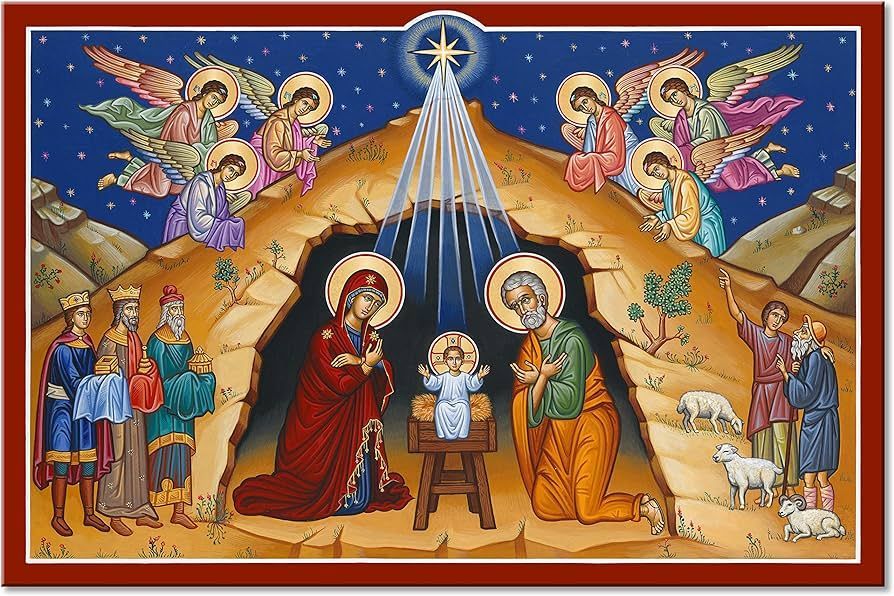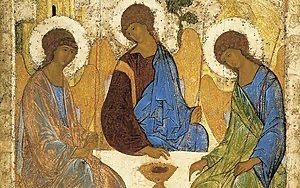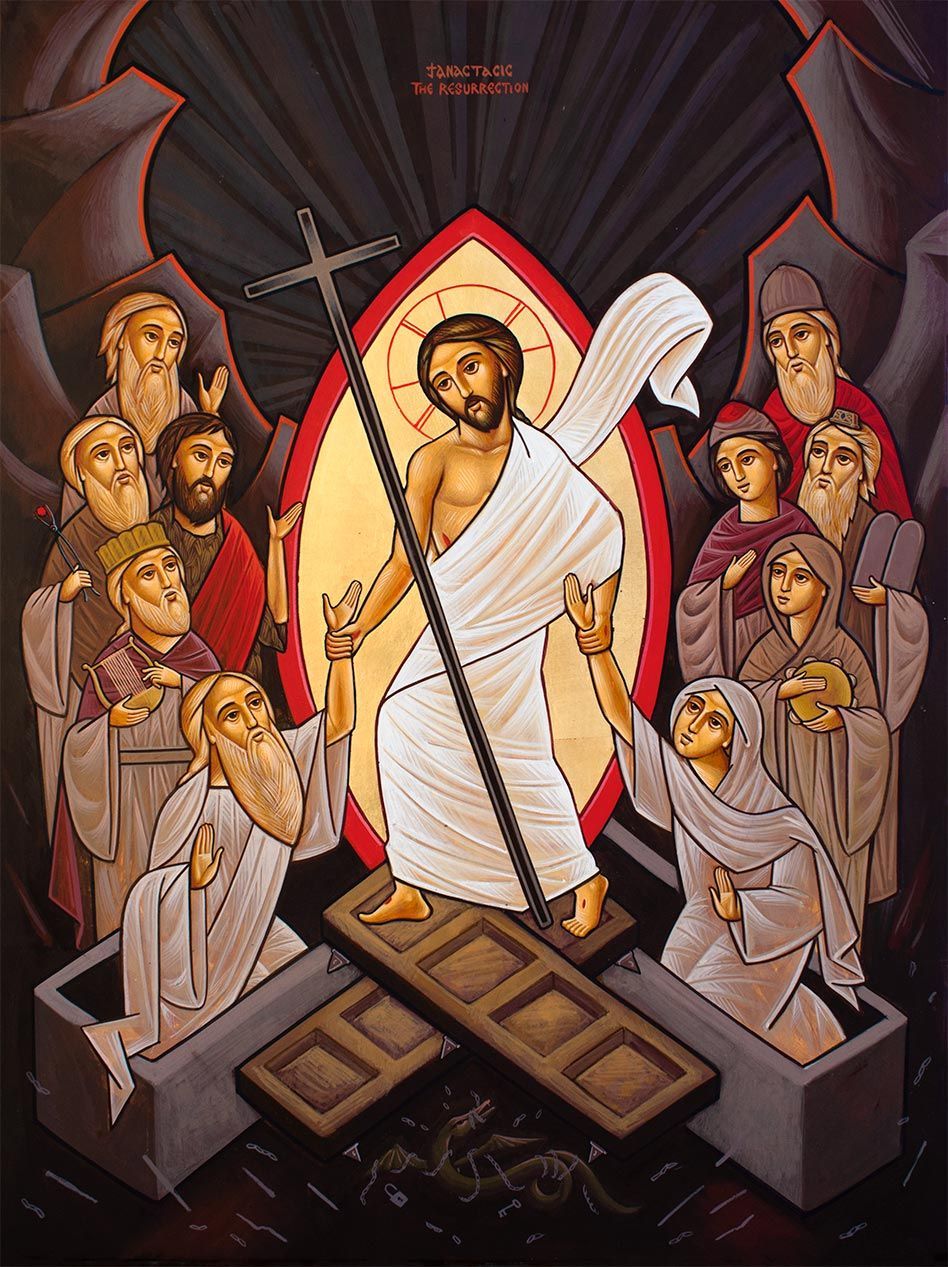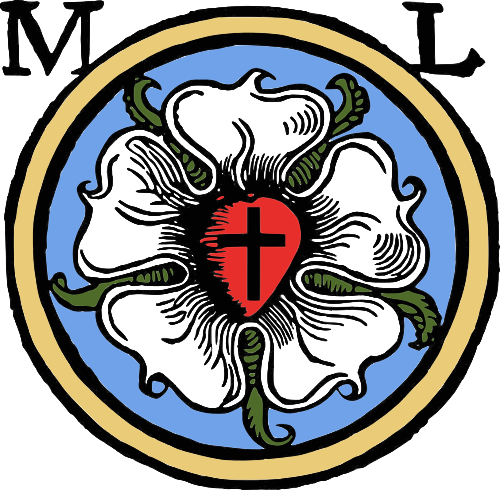Twenty-second Sunday after Pentecost, October 20, 2024
I imagine
that our first reading
sounded familiar to you.
It is a common reading
during the season of Lent,
especially during Holy Week,
specifically Good Friday.
“The Suffering Servant”
is a motif in the book of Isaiah,
“crushed for our iniquities,…
on him was the punishment
that made us whole.”
Its somber tone,
its tale of suffering and woe,
its narrative of God’s desire to punish sin,
of God’s need for satisfaction,
even God’s need to inflict pain and sorrow,
became the narrative context
for the Crucifixion,
and the motif—
even much of the language—
repeats in the Gospels’ retelling
of Jesus’ death.
As the early Christians looked back
on the Hebrew scriptures
and tried to make sense of their heritage
and their faith
in the light of their faith in Jesus,
the suffering servant
became the common explanation
of how God could let something
as awful,
humiliating,
excruciating
as a crucifixion happen
to the Son of God,
to the Messiah.
The Church
and her theologians
tried many different analogies
and explanations
over the centuries
to try and make sense of the senseless,
meaning from the meaningless,
salvation from damnation.
Most of them
involved some measure of ransom,
paying off someone
to free hostages.
But who was paying whom,
and for what?
Was God paying off the devil?
Was Jesus paying off God?
Was Jesus freeing humankind from sin,
or was God freeing Jesus from death?
And why was the cost so high;
and why was it blood, and suffering, and death?
All analogies breakdown at some point,
but this one seemed flawed from the start.
Other theories
tried a legal approach,
where God is the judge,
Satan the prosecutor,
and Jesus the defense attorney,
but at the end of this trial,
somehow the defense attorney
is the one sentenced to death,
so this one falls apart too.
We can also see
in our reading from Hebrews
that very early on,
there is also analogy
where Jesus is the high priest,
following in the footsteps of a legend
about a priest who suddenly appears to Abraham,
offers a sacrifice,
and makes things right between Abraham and God.
But in this analogy,
Jesus is also
the sacrifice.
The assumption being
that Jesus’ death,
Jesus’ blood sprinkled on the high altar of heaven—
itself the template for the high altar in the temple on earth—
was the sacrifice to end all sacrifice,
and the proof in the readers’ minds
would have been the destruction of the temple.
No altar,
no sacrifices.
But this one breaks down too.
Why is God so blood thirsty
as to only be satisfied
with the self-sacrifice of God’s only Son?
I think
what all of these theories and analogies
fail to ask,
is who, exactly,
is doing the sacrificing?
I also think the obvious answer
is God.
Because of human sin,
God has a right to damn us,
but God sacrifices this right instead.
Because of human sin,
God has the right to judge us,
but God sacrifices this right instead.
Because of God’s sovereignty
and because God is spirit
and has no body,
God knows nothing of obedience
or the limitations of time and space,
or of suffering, humiliation, and death,
but in Jesus,
God sacrifices these rights instead.
The incarnation of God in Christ Jesus
is the solidarity of God with the human condition,
God sacrificing every privilege of God-ness
to embrace the fullness of human-ness.
The incarnation of God in Christ Jesus
is the downward mobility
of heaven toward earth.
James and John want to climb the ladder of success.
They want to sit at the right and left hand of Jesus
when he comes in his glory.
Ever so gently,
Jesus tries to tell them
that if they want to share in his glory
that they are climbing in the wrong direction.
This ladder is for climbing down.
The path to glory,
to salvation,
is the same as the path of incarnation.
It is the path of descent.
Jesus promised that James and John
they will drink of his cup
and partake of his baptism—
that is, they will suffer
and they will die.
The path of descent
is to choose this suffering and death,
to sacrifice our desire to be free of it,
to welcome suffering and death
as honored guests,
to set the table in our hearts for humiliation and pain,
and raise a toast with the cup of Christ.
The path of discipleship
is the ladder down into our own hearts
where we will find
that we don’t have to struggle
to make sense of the senseless,
meaning from the meaningless,
or salvation out of damnation,
because there in the depths of our own hearts
we will find that God has already been at work
doing just that.
Carl Jung once said,
“My pilgrim’s progress
has been to climb down a thousand ladders
until I could reach out a hand of friendship
to the little clod of earth that I am.”
We, like James and John,
have been climbing in the wrong direction.
We are dizzy and disoriented
from the altitude.
We so long for that last, highest rung
that we have assumed it was God calling us there.
Many of us have even reached this rarefied air
and been disillusioned
in our failure to find God at the top.
Beloved,
God climbed down a long time ago
to reach out a hand of friendship
to the little clod of earth
in each of us.
If you are lucky enough
to have never known suffering or humiliation
in your own life,
then climb down a little further
and choose the suffering and humiliation
of your neighbor.
The path of discipleship
is the path of incarnation,
the downward mobility
of heaven toward earth,
the chosen service
of the suffering servant,
the sacrifice of God
to free the many.
So,
climb down,
into your hearts,
into the world’s suffering
and you will find yourself
shoulder to shoulder
with God’s very self.
Amen.









